Remembering the early days of building Molotov, PropTalk's cocktail class boat.
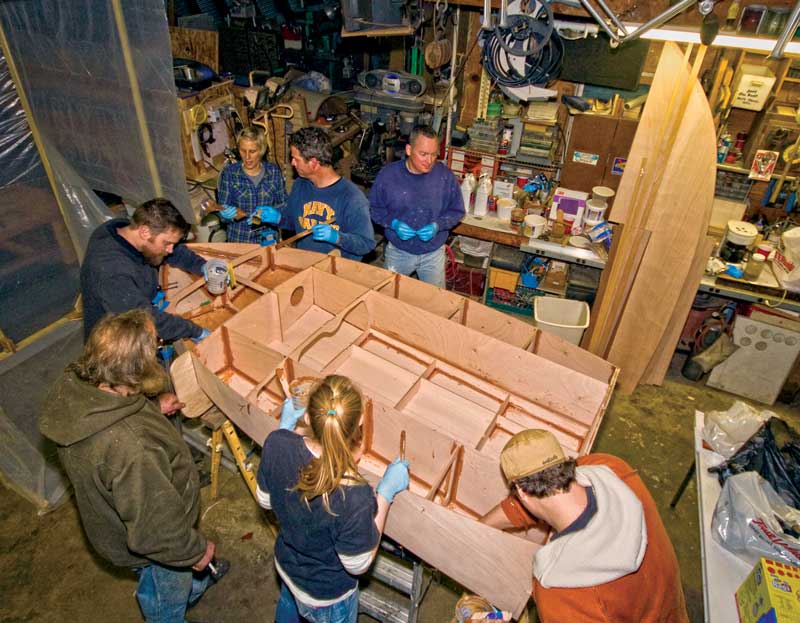
Conversation in the PropTalk Office:
“Meet us at the Glue Factory.”
“Huh?”
“You know the Glue Factory—the steel building on Mary’s family pony farm, where the ponies won’t go because of its name. We’re building a Cocktail Class Racer there.”
“Uh, right. What time?”
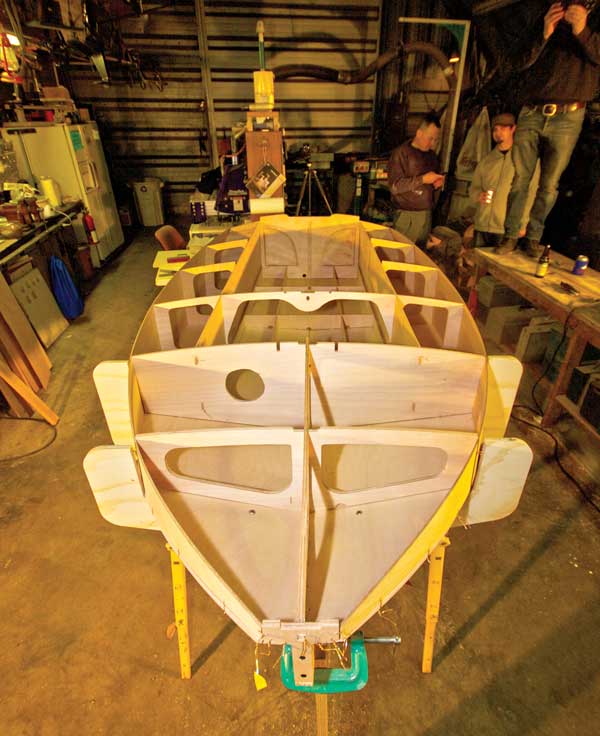
One team member arrived at the Glue Factory just after dark and wondered why no one mentioned the goats that wandered up to the driver’s-side door looking for handouts. The thought occurred that maybe this was some kind of elaborate snipe hunt: a sense-of-humor test. But, a bit of light was seeping between the 10-foot-high sliding doors, and a bit of music could be heard with a careful listen. A smaller door could be reached by weaving through miscellaneous junk: entry to the 30- by 60-foot interior, actually well-lit and heated by a fire going in the Salem Solution (a converted several-hundred-gallon barrel: burns three witches at a time, no waiting).
Inside, a white-bearded denizen of the Glue Factory, Jay Collison, was supplying tools, advice, and humor to the PropTalk team as they wrestled with the Chesapeake Light Craft kit. Jay is a master carpenter, in charge of most Glue Factory projects, and the only one who knows where things are in the building.
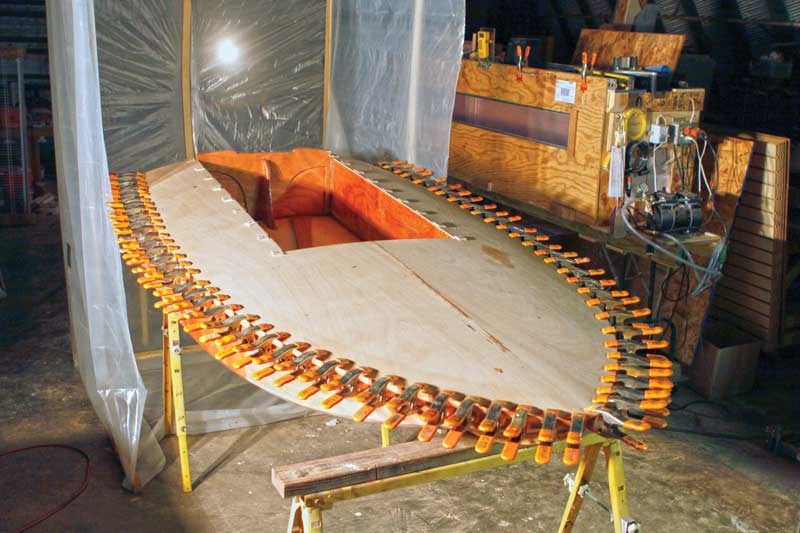
It seems that Chesapeake Light Craft had issued a challenge: “Think you guys could build one of our Cocktail Class racer kits?” And a couple of characters at Farr Yacht had added their sneers to the challenge.
The Glue Factory supplied tools, tables, and ultimately framing for a plastic tent over the project to keep it warm during the days. The PropTalk team worked at night—with photos and video and music and an occasional beverage. When Jay realized no one was paying attention to his advice, he baked a cake for the crew and presented it with dramatic flourish.
At the end of the winter, the PropTalk boat was found to float, but at the National Championships in 2012, a donated vintage 6-hp motor would not get it on a plane. Fortunately, at that time it was plain white, with no name, numbers, or graphics. A bit of work later, a different motor or two, the boat wearing flames and number 67 was named “Molotov” (Molotov cocktail, get it?). The CLC and Farr Yacht challenges were met—Molotov won some championships.
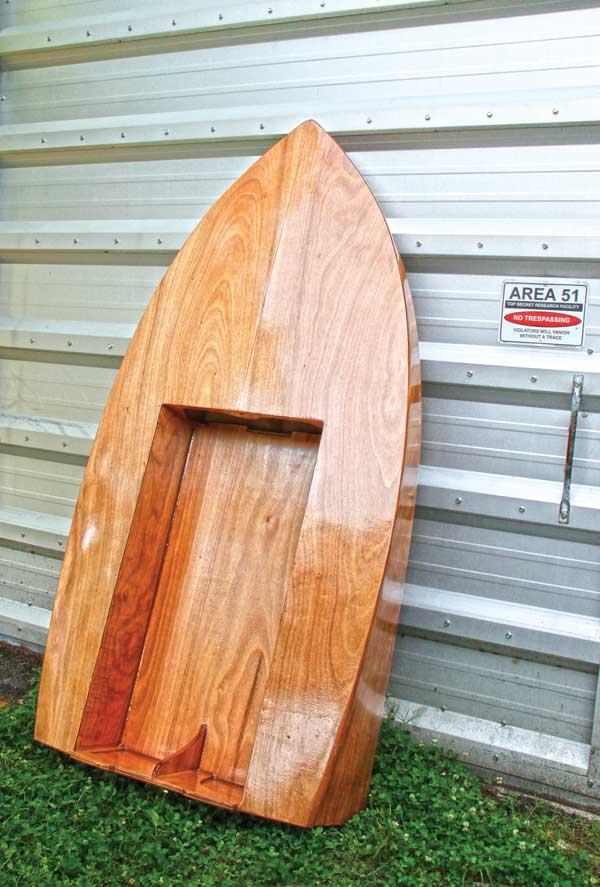
After watching the assembly of Molotov, the Glue Factory, primarily by Jay’s effort, turned out two plans-built boats and another CLC kit—all national champions in one class or other. They are ready when the Cocktail Class Wooden Boat Racing Association (CCWBRA) can resume racing. Stay tuned for updates at ccwbra.com.
By Charlie Iliff
In the Driver’s Seat
After nearly a year of work on the completion of Molotov, the cocktail skua racer, my first official competition was in 2012 at a CCWBRA Exhibition Race in St. Michaels, MD. As insignificant as this race may have been, the feeling of anticipation in the cockpit on the starting line as the horn sequence counted down was nothing short of exhilarating. However, the late 60s model 6-hp Johnson outboard could barely get the hull on plane, and both Cory Deere and I simply got dusted that day by the likes of Keith Carew and Russ Bowler.
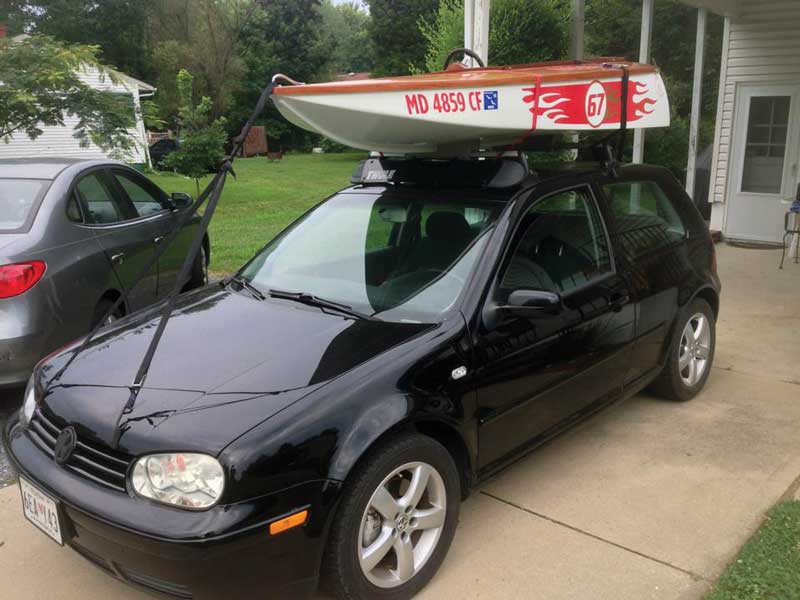
The following year, after many hours of motor research and development by Charlie Iliff and Jay Collison, Molotov was outfitted with newer motors that yielded much greater performance. The ’78 Johnson 6-hp pushed the boat to speeds close to 20 mph, and the ’98 Evinrude 6-hp topped out at 23 mph. Thanks to their efforts and the help of the rest of Team PropTalk, I drove Molotov to a first place victory in the 6-hp heavy class at the 2013 Kent Island Regatta.
A few months later I made a solo trip to the 2013 Oktoberfest in Philadelphia. It was my first-time single handling the boat and motors to a race. I was still new to the CCWBRA, but despite the heated competition, it was apparent that everyone was always willing to lend a hand. As soon as I pulled into the Corinthian Yacht Club, Jack Pettigrew greeted me and immediately offered to help me unload Molotov. Later in the day, Darryl Kepler assisted me with a busted fuel line connector. I was fortunate to earn first place in both engine classes that day.
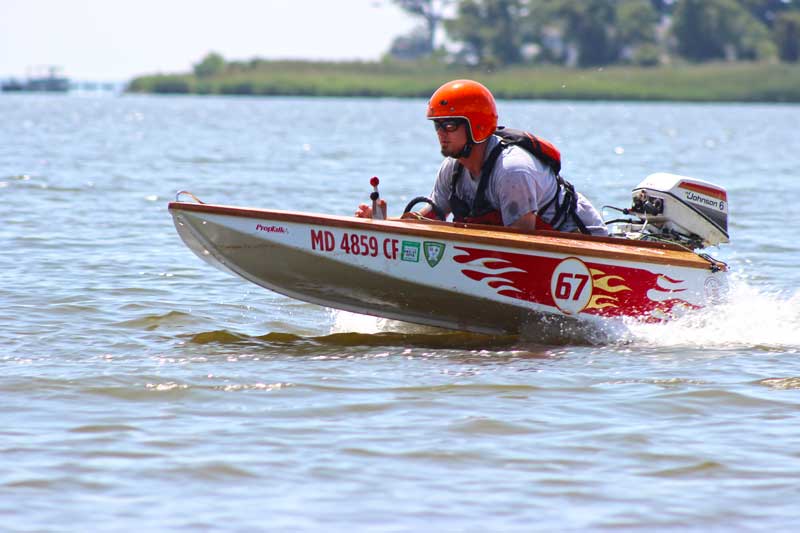
The best part about the CCWBRA is that the camaraderie far outweighs the competition. Although the starting line anxiety does not always compare to those early years of racing, every time that starting horn blows there is no shortage of excitement.
By Zach Ditmars